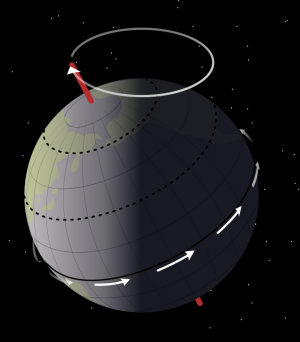Platonic Month
Exactly one-twelfth of a Great Year. The length of a Platonic month equals 2160.4 years. The term appears to have first been coined by Carl Gustav Jung in Aion where, in footnote 84, he gives us its calculated length: 2 143 years. Two centuries earlier Voltaire had proposed the concept, but not given it this name.
This can be calculated as Jung did from the precessional rate, as follows. In Aion, Jung used a precessional rate of 50.3608 arc seconds per year [an arc second is one-sixtieth of one-sixtieth of a degree]. This he took as the angle by which the Vernal Equinox Point changes, as seen against the stars, each year. Divide that angle into the full circle of 360º and you have the number of years which it would take to make a complete precessional cycle: 25,734.3 years. Divide that number of years by 12 for a Platonic month and you get 2 144.5 years, Jung's math is out by a year.[1]
Platonic Year
Term for the longest cosmic cycle from a geocentric point of view. It is the time taken for the vernal equinox to travel through the whole ecliptic. This takes 25729 years (according to some estimates 25771 years).
The vernal equinox spends on average 2144 years in one sign of the zodiac. This epoch is known as a Platonic month. A Platonic day is roughly 72 years, the average age of a human being.[2]
Precession of Equinoxes
Earth's precession was historically called the precession of the equinoxes, because the equinoxes moved westward along the ecliptic relative to the fixed stars, opposite to the yearly motion of the Sun along the Ecliptic.The precession of the Earth's axis has a number of observable effects. First, the positions of the south and north celestial poles appear to move in circles against the space-fixed backdrop of stars, completing one circuit in approximately 26,000 years.[3]


